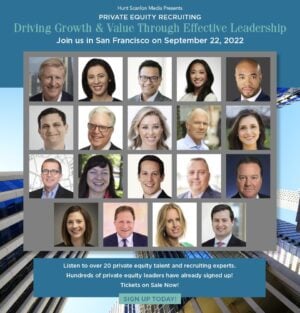Key Challenges for Human Capital Development in the New Normal

June 8, 2022 – Human capital development had to go through major revamping and upgrades to adjust to the new normal, post-pandemic world. New tools and training models have been formulated to cater to human capital development, according to a new report by The Taplow Group. “New tools and training models were formulated to cater to human capital development as we entered this uncharted territory of working amidst a global crisis,” the report said. “This global crisis impacted several economies worldwide and led to major changes which would continue to shape the way we work for times to come.”
Technology became our main source of survival through the crisis, as it played a key role in keeping us well connected during times when we were all scooped in our homes, according to The Taplow Group report. “Technology also ensured working from home culture is incorporated smoothly,” it said. “Human capital development also benefited significantly from this transition as employees could access training programs at their own convenience. All this time spent isolating also opened a new window of self-development and improving one’s skillset. People acquired new skills sitting in the comfort of their homes.”
But the search firm notes that there are two sides to every coin: Social isolation greatly impacted the education and training market. People developed career-related anxiety and their mental health crumbled under the pressure of having a poor work-life balance. The lines got blurry quickly when it came to balancing one’s professional and personal lives as there were literally no walls between our offices and our living rooms.
Shifting Organizational Priorities on Human Capital Development
According to the LinkedIn Learning report, this crisis was a key contributor to change and has accelerated learning. Priorities of organizations have shifted and the focus on human capital development was increased as they require employees that are far more competent. “This led to increased investment in human capital consultancy services,” The Taplow Group report said. “Employees at every level are feeling the constant pressure to better themselves and constantly outperform.”
Increased Need for Human Capital Consultancy Services
A lot of senior management couldn’t handle the pressure and decided to opt for early retirement midst the crisis, which posed the challenge of replacing them quickly and finding talent that could lead everyone in the right direction, said The Taplow Group. This increased the need for human capital consultancy services.
Changing Learning Environment to Support Human Capital Development
Classroom training and learning programs were shifted online. No one was prepared for this, and several changes had to be made to the existing learning strategies, including the drastic shift towards digital learning. Zoom calls are part of the new normal and virtual training seems to be here to stay. “Even though technology has been our savior through this, it doesn’t come cheap and such quick human capital development came at a high price,” the report said. “Those who were technologically challenged no longer had a way to get away with it and had to improve their skills quickly to keep their jobs.”
Related: 5 Actions Business Leaders Can Take as War In Ukraine Deepens
There was also a major drop in employee engagement and working from home culture somehow led to higher levels of fatigue. The Taplow Group says that employees burned out quickly and human capital development efforts had to be refocused on combating these new challenges. People feeling isolated while being in isolation was a given and it was difficult to create a lively and exciting work environment via screens.
 Working from Home and Adjusting to the New Normal for Businesses
Working from Home and Adjusting to the New Normal for Businesses
Remote work is perhaps the most significant change to the world of work brought about by the pandemic. Yet too few businesses have adjusted – or even considered – their culture accordingly, says Alyssa Gruber of Hudson Gate Partners in a new report. Read more.
“As we navigate through this crisis and its never-ending new variants, each organization is struggling to find its new normal,” The Taplow Group report said. “Some are trying the hybrid route; some have become far too comfortable with working from home to switch back. Achieving organizational goals in such difficult times requires agility.”
5 Ways to Drive Employee Development Programs
The modern workplace has become dynamic, and it is now transitioning from an employer-driven ecosystem to an employee-driven one, according to a separate report by The Taplow Group. “This means, that, employers cannot take employee loyalty for granted,” the study said. “CEOs and business leaders need to identify ways through which they can drive successful employee development programs. It requires a lot of thought and brainstorming to develop a well-suited and sustainable employee development strategy.”
The Taplow Group provides strategies to drive growth and development for employees. Let’s take a closer look:
1. Understand Goals and Aspirations
With the remote and hybrid mode of work, communication has become an essential cornerstone for employee engagement. “Leaders must have one-on-one interaction with their workforce and understand their professional goals and aspirations,” the report said. “At the same time, help them identify milestones in their professional journey and provide them the resources that can support them in this journey. In this way your employees would feel valued, resulting in greater loyalty and productivity.”
2. Arrange for Training Programs
Once you have identified and prepared a career plan for your employees, you need to now arrange for training sessions to help them develop new skills and competencies. “These programs need to be arranged both at a group level as well as at individual levels,” The Taplow Group said. “With virtual learning, attending seminars, conferences, and video lectures has been very easy and employees can learn at their own pace. Make sure you also help your workforce get updated with what’s happening around the industry as well and share learnings with the wider audience in the organization.”
3. Rotate Job Roles
Variety is the spice of life, and it is especially true for your workforce. “Try to rotate your employees in different job roles, maybe within the same department or business unit,” said study. “This would help them develop new skills, take an active interest in work, and appreciate the work done by fellow employees. Job rotation will not only increase employee productivity but also promote greater collaboration within the organization.”
4. Support Work-Life Balance
Almost every CEO certification program will now stress work-life balance. The last two years have highlighted the importance of mental health, time spent with family, and devoting time to hobbies and interests. “As a manager or CEO, you need to ensure that your employees are not burning themselves at work and they are encouraged to take time off, spend time with family, or pursue any hobby of their choice,” the report said.
5. Create and Share Succession Plans
Every employee wants to see themselves climbing the ladder. Hence, create a succession plan and show your employees how you plan to involve them in the leadership of the organization. “CEO recruiters focus a lot on the ability to develop succession plans for modern-day CEOs,” said The Taplow Group. “This will ensure that your employees take more interest in their work, business activities, and become closely aligned with the mission and vision of the organization.”
The study said that “employee development programs give employees something in return for their work and service. A carefully thought-out plan can result in tremendous productivity and loyalty from your employees.”
Related: Future Insights for Engagement, Retention and Communication
Contributed by Scott A. Scanlon, Editor-in-Chief; Dale M. Zupsansky, Managing Editor; and Stephen Sawicki, Managing Editor – Hunt Scanlon Media













